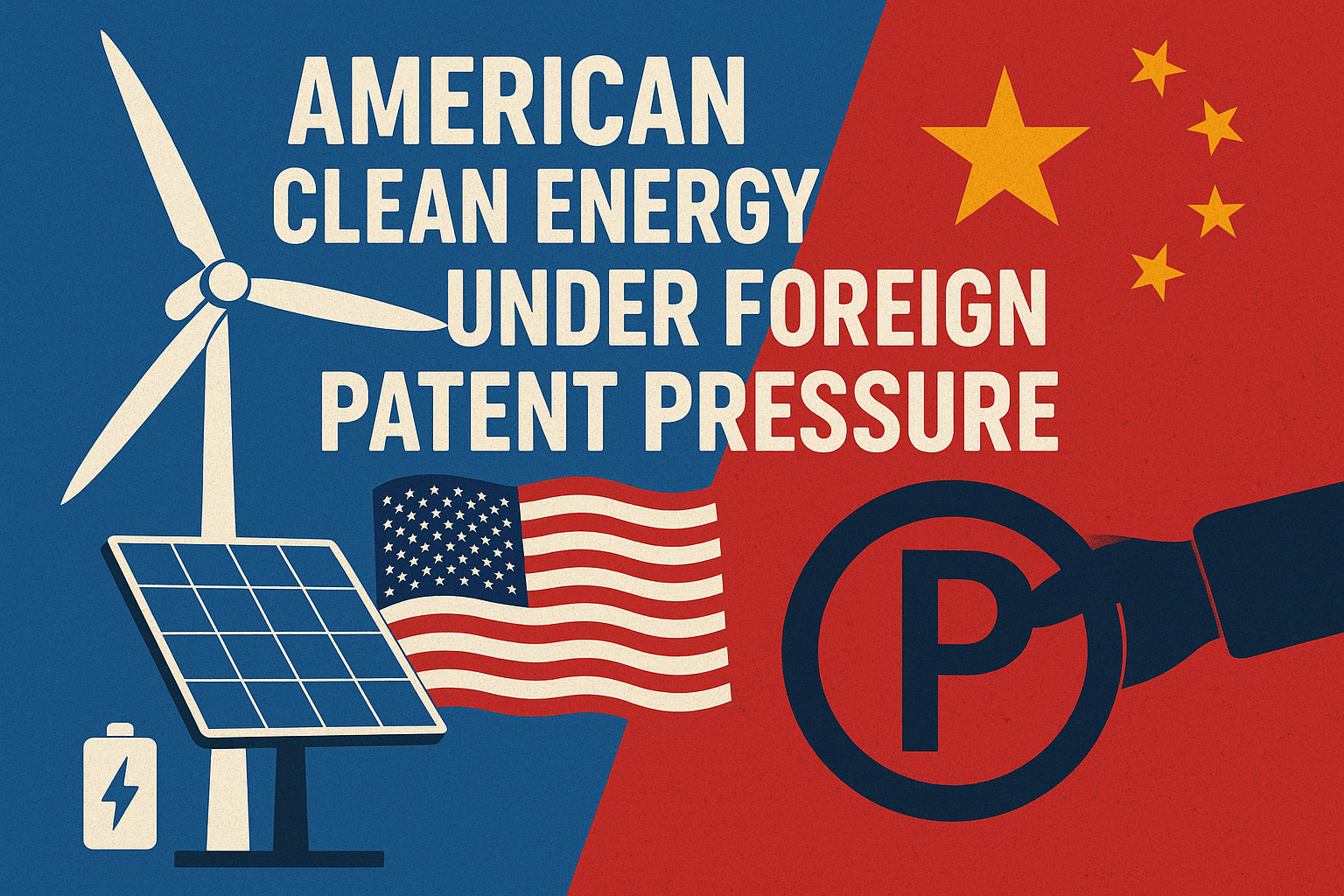The United States clean energy industry is feeling the heat from foreign patent competition, as global innovation accelerates in solar, wind, and battery technologies. A new report by OilPrice.com warns that foreign firms, particularly from China, are reshaping the intellectual property (IP) landscape and squeezing U.S. players out of key technology domains.
Growth Slows Across Renewable Sectors
U.S. clean energy capacity is projected to grow only 7 percent in 2025 — the weakest rate in over a decade. Wind power is expected to expand just 1.8 percent, its slowest growth since 2010. Analysts attribute this slowdown to a mix of policy delays, permitting hurdles, and competitive patent claims that make domestic expansion more complex.
Offshore wind projects have faced funding cuts and regulatory freezes, further eroding investor confidence in American renewables.
Foreign Patents Redefining Innovation Boundaries
The article highlights a surge in patent filings by non-U.S. firms. Chinese, European, and Canadian companies now dominate patent registries in core clean energy technologies such as solar cells, energy storage, and grid efficiency systems.
This trend complicates efforts by U.S. companies to secure exclusive rights or defend against infringement suits. Many of the latest clean energy innovations are born outside the United States, where U.S. patent examiners struggle to verify prior art or challenge overlapping claims.
Ongoing Legal Battles Intensify
Recent court cases illustrate the deepening patent conflict.
- Tigo Energy and SMA Solar Technology reached a settlement over rapid shutdown systems for solar installations.
- Maxeon Solar Technologies has sued Canadian Solar and other firms for allegedly infringing its TOPCon solar cell patents.
Such disputes underscore the rising legal costs and strategic risks facing American renewable energy manufacturers.
China’s Lead in Clean Energy Technology
China’s rapid clean energy growth adds pressure on U.S. companies. The country has not only scaled up solar and wind manufacturing but also unveiled the world’s first operational thorium reactor — a symbol of its advanced energy ambitions.
Chinese firms enjoy state subsidies, integrated supply chains, and broad patent portfolios that strengthen their global influence. Industry experts warn that this combination could limit U.S. access to critical technologies and components.
Patent System Under Strain
The U.S. Patent and Trademark Office (USPTO) faces increasing difficulty handling foreign-dominated innovation landscapes. Examiners often lack access to non-U.S. databases and prior art in languages like Chinese or Korean.
Legal experts suggest American firms must adapt by narrowing patent claims, improving defensive IP strategies, and pursuing international licensing or joint ventures.
Outlook: Balancing Innovation and Protection
As the U.S. races to meet its climate and energy goals, intellectual property strategy could become a key battleground. Strengthening domestic R&D, improving patent transparency, and streamlining approval processes are now critical to keeping pace with foreign competitors.
Analysts believe that without decisive action, the United States risks losing not only technological leadership but also control over the future of global clean energy.

